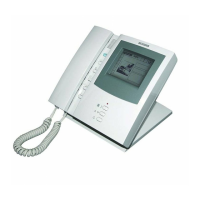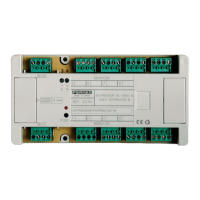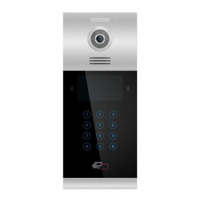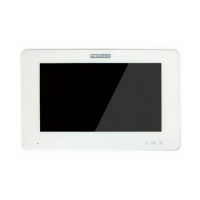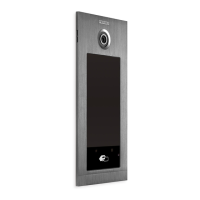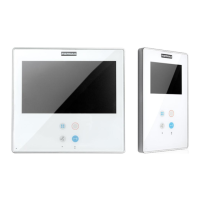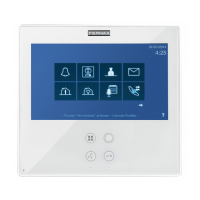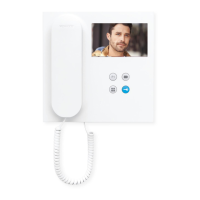Do you have a question about the Fermax MDS Digital Guard Unit and is the answer not in the manual?
Overview of the physical controls and display elements of the Guard Unit.
Describes basic modes: Day (full access), Mixed (direct to house), and Night (panel-like operation).
Explains advanced modes like Master-Day/Mixed and Transfer-Day/Mixed for multi-block systems.
Details display zones like type, memory indicator, mode, side menu, clock, and communication status.
In-depth explanation of the information presented in the Main Display sections (A-E).
Procedure to adjust display contrast and select call tones.
Procedures for answering calls from houses, outdoor panels, and indoor panels (decoder).
How to intercept calls from outdoor panels to telephones and transfer them to other houses.
Includes connecting with panels, calling houses, intercommunicating telephones, and calling other Guard Units.
How to initiate calls and intercommunicate with telephones or monitors.
Method for viewing, selecting, and responding to calls stored in the Guard Unit's memory.
Procedures for answering specific call types or cancelling calls without responding.
Describes operating modes for the Panic Alarms Reception Centre function.
How to respond to panic alarms received immediately or from memory.
Handling sensor alarms and activating relays via the Guard Unit keypad.
Summary of the primary operating modes for the Guard Unit.
Quick steps to change the Guard Unit's operating mode.
New feature allowing calls to zero-prefixed numbers without programming entry.
Overview of the physical controls and display elements of the Guard Unit.
Describes basic modes: Day (full access), Mixed (direct to house), and Night (panel-like operation).
Explains advanced modes like Master-Day/Mixed and Transfer-Day/Mixed for multi-block systems.
Details display zones like type, memory indicator, mode, side menu, clock, and communication status.
In-depth explanation of the information presented in the Main Display sections (A-E).
Procedure to adjust display contrast and select call tones.
Procedures for answering calls from houses, outdoor panels, and indoor panels (decoder).
How to intercept calls from outdoor panels to telephones and transfer them to other houses.
Includes connecting with panels, calling houses, intercommunicating telephones, and calling other Guard Units.
How to initiate calls and intercommunicate with telephones or monitors.
Method for viewing, selecting, and responding to calls stored in the Guard Unit's memory.
Procedures for answering specific call types or cancelling calls without responding.
Describes operating modes for the Panic Alarms Reception Centre function.
How to respond to panic alarms received immediately or from memory.
Handling sensor alarms and activating relays via the Guard Unit keypad.
Summary of the primary operating modes for the Guard Unit.
Quick steps to change the Guard Unit's operating mode.
New feature allowing calls to zero-prefixed numbers without programming entry.
| Communication Type | Digital |
|---|---|
| Display | LCD |
| Audio Quality | High |
| Technology | Digital |
| Compatibility | Fermax MDS system |
| Consumption | Standby: 80 mA, Active: 200 mA |

